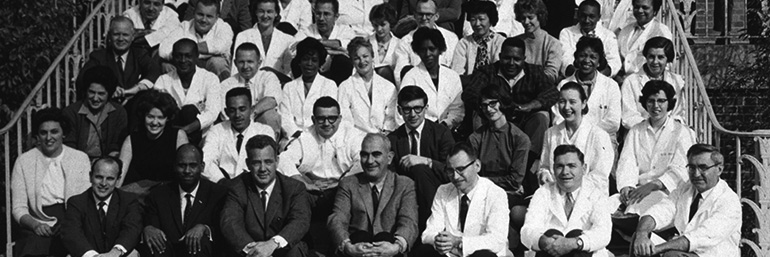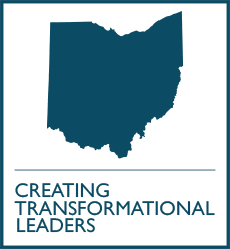Aug 22

The Journey of the Underrepresented: The History of Exclusion in the Health Care Field
The Journey of the Underrepresented series of articles was written by Asha Blake, a local photojournalist and senior at Kent State University, to explore challenges and barriers faced by underrepresented minorities in the health professions.
In health care, it is important to have workers who look like the community they serve. More diversity can help workers better understand each other, and patients are inclined to be more comfortable with health care professionals who reflect their background. Culture can impact communications and interactions with health professionals and even health care outcomes.
However, in the United States there is an underlying issue regarding the health care field and diversity. The country is becoming more diverse, but the health care workforce — particularly among physicians — does not reflect it.
According to the Association of American Medical Colleges (AAMC) research conducted in 2018, 56.2% of all active physicians, identified as white. The researchers reported much smaller percentages of physicians they identified as Black and Hispanic — 5% and 5.8%, respectively.
These numbers for underrepresented minorities do not reflect the community of the United States. In fact, it shows how large the gap is between the population versus the number of physicians there are for some races/ethnicities. The 2020 Census reported that 13.4% of the U.S. population was Black and 18.5% Hispanic. The contrast can be even sharper in the urban areas of northeast Ohio.
There are many factors that have caused this lack of diversity in health care. However, one issue comes up frequently at the forefront of this problem: Discrimination.
History of Discrimination
The history behind discrimination in health care in the U.S. can be traced back at least to the 1800s, when most universities did not allow non-white students to attend.
That forced a choice to either not go to medical school or get a degree outside of the United States (if they were able to do so). For example, Dr. James McCune Smith, the first African American to earn a medical degree, had to travel to Scotland to complete his education, which was impossible for him to do in the United States at the time.
Eventually, after 1865, non-whites were allowed to attend American medical schools. But the problems did not stop there. There were many challenges that both Black and Latinx* people had to face once admitted to these universities and after obtaining their degrees. For many Black students for example, there were policies that prohibited them from getting professional society memberships.
These societies provided opportunities for success. They were the conduit for physicians to meet and connect with others. Admissions into hospitals were becoming closely linked to these medical society memberships. This barrier made it difficult for many Black students to get jobs after college even if they were qualified to do so.
Like members of the Black community, Latinx individuals also struggled with having the ability to work in their practice after college. Some medical associations would not accept students simply because of their race or ethnicity. Mary Headly Treviño de Edgerton, a Mexican American medical student in Texas, experienced this after graduating in 1909. She graduated top of her class and earned the highest grade on the state medical exam that year. However, only one medical association in the state would allow her admittance.
Although other factors may have been at play, her class placement and grades should not have gone unnoticed by other associations.
Many other stories and situations like Dr. Smith’s and Dr. Edgerton’s can be explained by the early discrimination and exclusion in the United States. Black and Latinx students were allowed into medical schools much later than white students. The first medical school opened in 1765 in Pennsylvania, and most schools did not allow minorities to attend until 1865. This 100-year gap set many minority students and families back because they were starting further behind students who had the opportunity to attend from the very beginning.
Even though this inequity took place years ago, it still affects today’s health professionals. The 2019 Survey of Consumer Finances reported that the typical white family has “eight times the wealth of the typical Black family and five times the wealth of the typical Hispanic family.” This affects the applicants seen at medical schools because many come from wealthier families. The AAMC reported that in 2018, “more than three-quarters of medical students came from families in the top two quintiles of family income.”
Other factors that may also be causing the slow incline of diversity include a lack of representation amongst faculty members (nationally, Black and Latinx faculty comprise 3.8% and 5.9% medical school faculty), and a poor support system throughout a student’s time at a medical school.
Representation Matters
The U.S. Department of Education reports that “greater representation of underrepresented groups among faculty may increase student’s sense of academic validation.” It is important for students to have someone to turn to that may share similar life experiences. It can help create a bond and can encourage an individual to stay with their program.
At Northeast Ohio Medical University (NEOMED), the College of Medicine’s vision is to be a national leader in community-centered medicine. In Northeast Ohio, the population is 17.41% Black and 5.55% Latinx. By contrast, for the 2021-2022 school year, the College of Medicine enrolled 4.49% Black students and 7.87% Latinx students.
While the University is headed in the right direction, to reflect Ohio’s diversity of 12.4% Black and 18.7% Hispanic population, we still have a long way to go to reflect diversity within Northeast Ohio’s major cities of Cleveland (48.8% Black, 13% Hispanic), Akron (29.9% Black, 3.1% Hispanic) and Youngstown (41.1% Black, 10.9% Hispanic).
Although there is a long history that has hindered the progression of minority health care workers, the future representation in this field must be better. It is important for future generations to have access to health care professionals who come from the same background as them and understand their needs and expectations.
* The term Latinx includes individuals with ancestry from Latin American countries who may or may not speak Spanish.
Also in the series:

